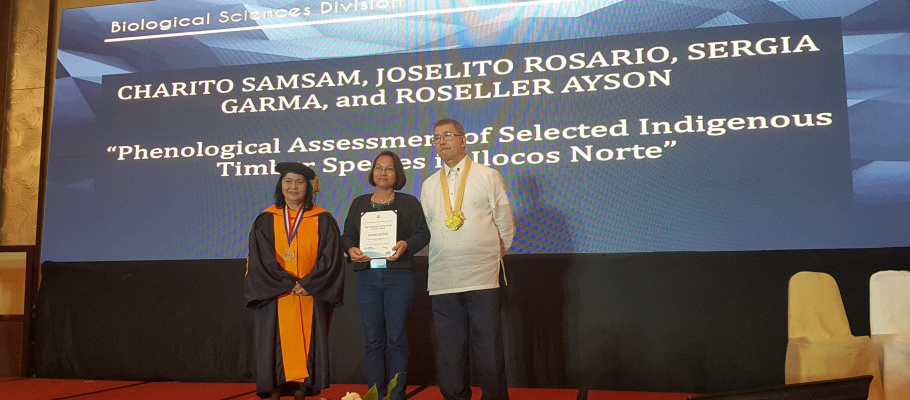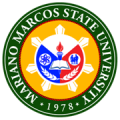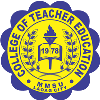
MMSU savants bag best poster award in scientific confab
A team of MMSU researchers bagged the Best Scientific Poster Award at the close of the 41st Annual Scientific Meeting (ASM) of the National Academy of Science and Technology (NAST) held at the Shangri-La Hotel last July 10-11.
Charito Samsam, Joselito Rosario, Sergia Garma, and Roseller Ayson bagged the award with their entry, Phenological Assessment of Selected Indigenous Timber Species in Ilocos Norte in Biological Sciences division. It was Samsam who represented the team during the scientific poster symposium.
The poster showed the result of a study conducted in selected areas in Ilocos Norte where six premium indigenous timber species were evaluated - palosapis (Anisoptera thurifera), molave (Vitex parviflora), balayong/tayabas (Sindora supa), paldao (Dracontomelon dao), ipil (Insia bijuga), and lanete (Wrightia pubescens).
The poster was among the 21 research topics from MMSU that were accepted in the conference. Of this number, nine were under the agricultural sciences division, and six papers each under the biological sciences, engineering sciences, and technology divisions.
A total of 325 entries from various institutions in the country were accepted for presentation in six divisions namely: Agricultural sciences (134), Biological sciences (67), Engineering sciences and technology (39), Health sciences (30), Mathematics and physical sciences (21), and Social sciences (34).
The conference’s team, Caring for the Country's Carrying Capacity, focused on the country's efforts to attain the three areas of Sustainable Development Goals -- quality education, responsible consumption and production, and life below water.
NAST is the highest recognition and scientific advisory body of the Philippines under the Department of Science and Technology (DOST). It was established to recognize Filipino scientists who made worthy contributions in the advancement of science and technology.
The study
The researchers conducted the study to provide information on the phenology of superior mother trees of selected indigenous timber species in order to develop seed calendar that could facilitate the collection of their seeds and plan nursery operation to produce timely amount of planting stocks for reforestation.
Phenology is the periodic cycle of plants' life as influenced by seasonal variations in climate, as well as habitat factors such as elevation.
Samsam claimed that seed shortage of superior tree species is one limiting factor in scaling-up the rehabilitation of denuded areas because of the unpredictable fruiting seasons of most trees and the short viability of recalcitrant seeds.
During the conduct of the study, the researchers determined the vegetation profile, soil variable, and agro-climatic factors of the timber species; considered the individual trees with diameter breast height greater than 20 cm; and observed their once-a-month leafing, flowering, fruit development and maturation for three years.
Results showed that the flowering activities of molave, paldao, lanete and palosapis start after leaf flush during the first rain in May, while tayabas and ipil bear flowers during mid-summer.
In terms of fruit development and maturation, the phenophase of palosapis and lanete runs in 8-9 months; molave in 3-4 months, ipil in 4-5 months, and paldao and tayabas in 2-3 months. Moreover, timing of flowering and fruiting remains unchanged in almost all the timber species.
Thus, the researchers recommend that the ideal time of collecting seeds or fruits of palosapis is April to May, tayabas is May to June, paldao is August to September, molave is September to October, and ipil is October to November.
Gallery

Dear Valued Client,
We will be introducing our newly upgraded website on October 31, 2024 – offering faster access, improved navigation, and enriched content for students, faculty, partners, and stakeholders. Experience how we cultivate minds and transform futures at MMSU.

 CAFSD
CAFSD CASAT
CASAT CAS
CAS CBEA
CBEA CCIS
CCIS COE
COE CHS
CHS CIT
CIT CTE
CTE COM
COM CVM
CVM Graduate School
Graduate School




